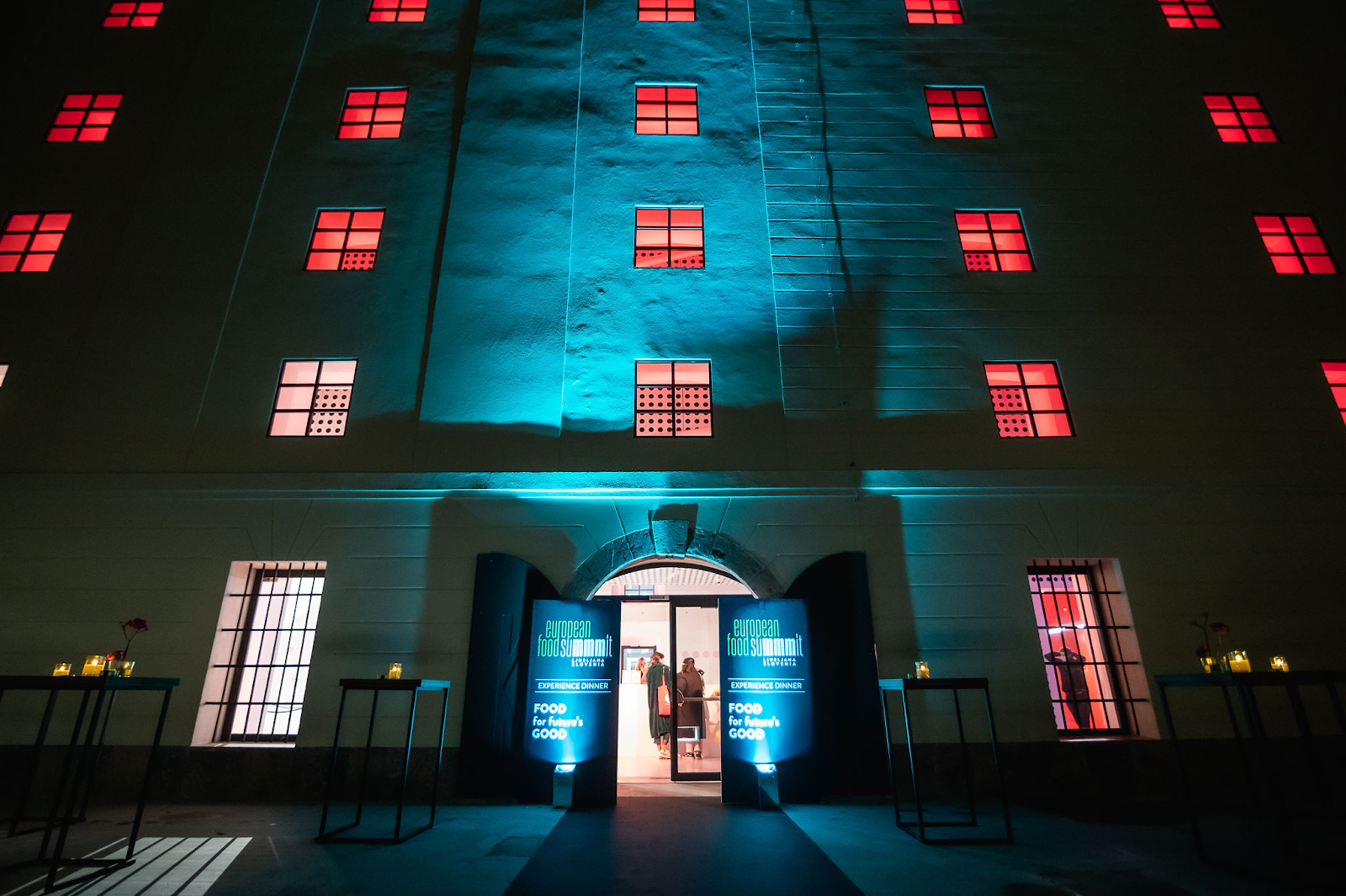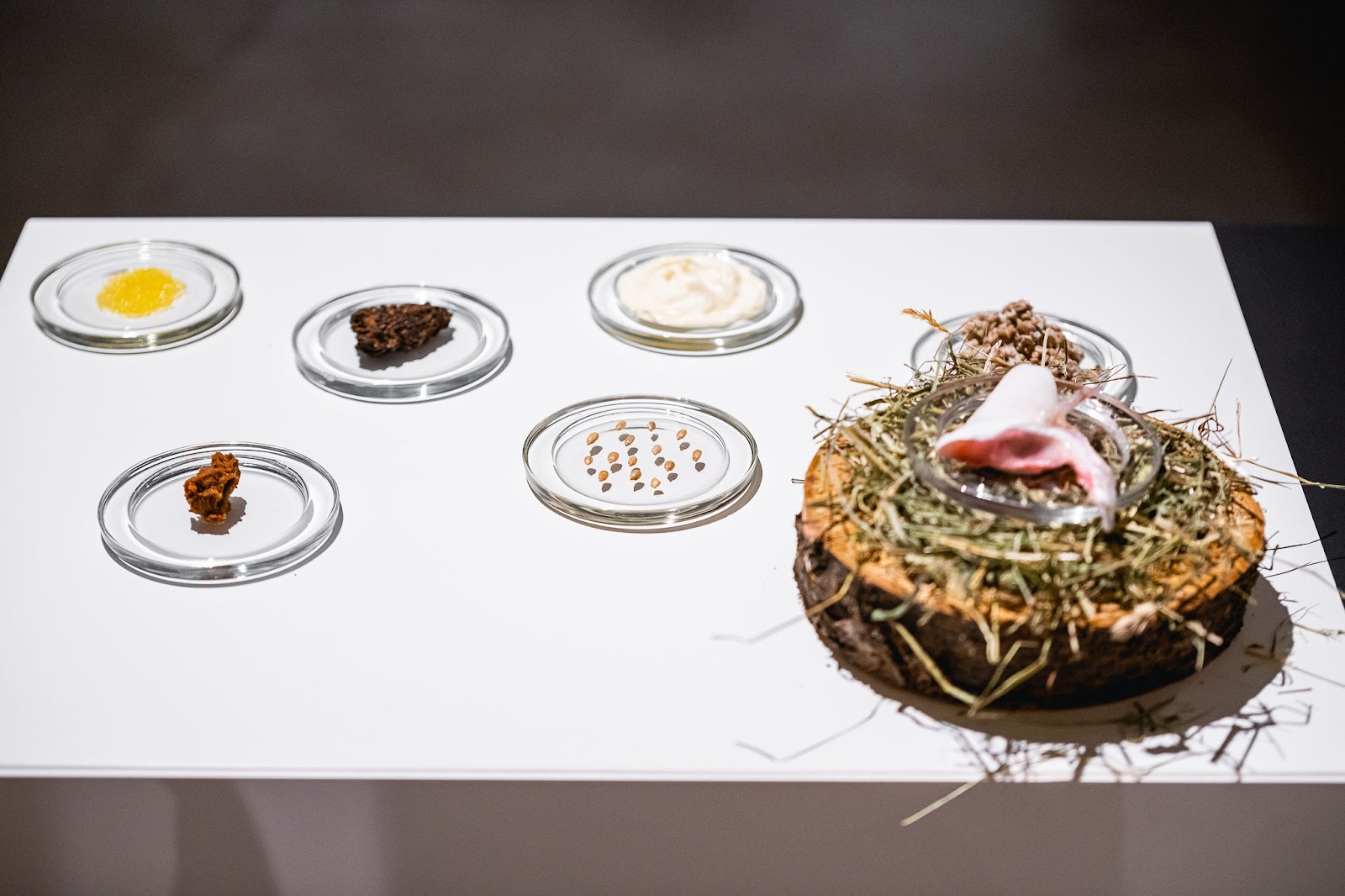Text by Olivia Beba Haslam
Photos courtesy of European Food Summit
The European Food Summit returns tomorrow, on the 5th of November 2022. This year, like last, will be held across three days, and will surely be another un-inimitable, experiential gastronomic tour and an insightful lesson in forward thinking from the industry leaders. The following piece shows a mere snippet of insight into what this experience promises.
I started writing this in December 2021, so not quite yesterday. Memories of Ljubljana my phone prompts me, – and I scroll through them, both glad for the reminder and a little irritated that a 12mp iphone lens tells no true tale of what this time was, a sprightly November evening.
We were all there as part of the European Food Summit 2021. The symposium, the epitome of conversation to be taking place around food, had been held that afternoon, and in the brilliance of impassioned voices, it had predictably run a little late. We shuttled back to our accommodating rooms, drank instant coffees and somewhat readied ourselves, although not nearly as immaculately as should have been done, I realized, when the magnitude of the evening dawned on me. 
Shuttle after shuttle turned us out at the entrance of a cuboid building steadfastly glowing with grandeur, and we found ourselves beckoned in by the cheer of organiser Martin Jezeršek. Handshakes, photos, Andrea Petrini against a branded backdrop. The simultaneous opening and closing party to the singular event. On staggered plinths, a derivative take on canapés of the septenary chefs who would be performing that evening were placed around the room. Temporary critics mingled, posed, gazed, and were eventually swept into the dining hall by the purple stage-light beams of occasion.

There’s a proud anonymity that can come with the clad of chef whites, a uniform of in-distinction. But as the first personal playlist broke, we were launched into an immersive performance of individualism. Luka Košir of restaurant Grič presented a tartare of deer and mushrooms under a chestnut disk, with nasturtium finishing the dish as delicately as Allan Clarke’s guitar playing in the intro to Long Cool Woman. Uroš Štefelin from Vila Podvin creatively served red corn polenta with pear under a translucent bed with an ooze of green sharpness. Uroš Fakuč of Dam served the not-so-humble potato with truffle and runny egg yolk in a regularly (and in this case, earnestly) interpreted meal. Jorg Zupan of Atelje served charred cabbage with sumac, his vegetable hailing rebellion mirrored in the 90s punk rock sound of Nomeansno that screamed across the room to both glee and entertaining dismay of the diners. The double Michelin queen Ana Roš of Hiša Franko served a ‘Sunday roast leftover’ inspired dish; an earthy crepe topped with shallot steeped in aged meat juices and roasted hazelnuts – A mouthful intended to be rolled, eaten in one, and the glistening fat juice licked from your palm and anywhere else it inevitably dripped. Whether her co-chefs liked it or not, remix paired with remix, electronic dance pulsed at 128bpm. Gregor Vračko of Hiša Denk celebrated the salty satisfaction of pork with cheek, crackling, and lardon. From classic to cult, the Smashing Pumpkins covered Depeche Mode as we chomped through sow. As time called the night to an end, Tomaž Kavčič of Pri Lojzetu brought a final dish of seasonally immaculate persimmon with chestnut. Who knows the song, as last mouthfuls of sweet wine were accompanied by the scraping of chairs and swishes of coats. The Italians self-soothed with a couple of mouthfuls of Radikon, then it was time to retire.

The next morning brought a light that lacked immediate clarity, but we ventured out into it regardless. By my fourth coffee, Anna Morelli, the Petrinis and I, were ready to return to our host of the previous evening: Gallery Cukrarna. The building itself collates a Slovenian history from sugar processing, to degradation, to slum housing. Capitalism’s finest that disregarded the artists and the thinkers. And so the genre of Slovenian modernism was born there among the wreckage.



The light of day presented a bracing contrast from twelve hours prior. Perforated iron clouds formed the suspended gallery rooms, preserving the skeleton of the original building immaculately, but bursting with eager modernization. The Wonderfulness of Memory, the elementary exhibition, enveloped the space, and it was by every meaning, stupendous. In the galleries, Sophie Calle as the celebrant of melancholy, reminisced painful encounters in embroidery until they faded in time and magnitude. Faceless clocks donned the walls in Vadim Fiškin’s Dark Times, the sound of time passing echoing bleakly. Teresa Margolles’s project Recados Póstumos left us sentient of our own mortality and with space to honor memories for those no longer here to hold them. It was a sobering relief of a tour. In the basement, one after the other, we discovered Petrini surrounded by Janet Cardiff’s The Forty Part Motet. An emotionally ideal delusion of live performance, the piece a perfectly obvious parallel to the previous night. We closed our tour and sought to replace nitrates in the form of fatty salsiccia smothered in neon mustard.


The gallery remains now in its success, an archive of memory. And of art. But what of food? We viewed dishes like sculpture, documented them like paintings, engaged with them as performance. And then they were gone. And what we are left with is the memory of the food, the meal, the dining experience. So, you bring your soul to a gallery, your personality to a dinner, and hopefully don’t disengage yourself as a journalist. The fact was, we were there to be wooed, and in time we can appreciate what it left us with. And that is the wonderfulness of memory. It is kind to us. It’s how we survive, we select what we need, discard the lesser, and when a special meal comes along, we tell it as a tale. And this one lulled me into eleven months of slumber.

The European Food Summit returns to Ljubljana in November 2022.



